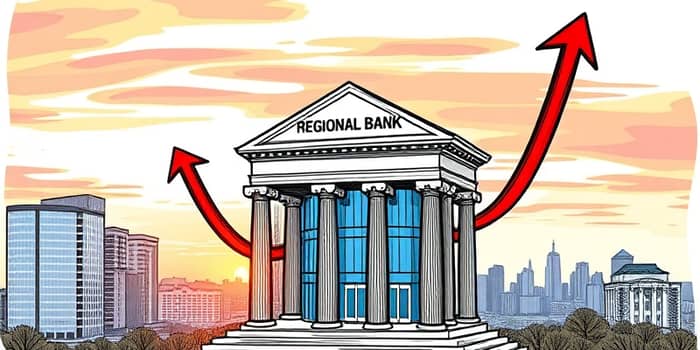
In 2025, regional banks find themselves at a critical juncture. After a period of rapid Federal Reserve rate hikes to tame inflation, institutions of all sizes are now confronted with an evolving interest rate environment that brings both challenges and opportunities. As deposit costs remain high and loan demand fluctuates, banks must adapt with agility and foresight to safeguard their balance sheets and seize new avenues for growth.
The U.S. economy is entering a phase of moderated growth, with GDP projected to slow to 1.5% in 2025. This deceleration reflects a combination of cooling consumer spending and restrained business investment. Meanwhile, the yield curve has re-steepened after two years of inversion, offering a glimmer of hope for margin recovery.
Key macroeconomic factors shaping the outlook include:
One of the most immediate effects of the rate cycle has been on net interest margins (NIMs). Deposit rates soared in tandem with policy rates, while loan yields adjusted more gradually, leading to a pronounced squeeze. Even if the Fed begins reducing rates, deposit costs are forecast to stay elevated at around 2.03% for some time.
Regional banks, which rely heavily on the spread between short-term funding and longer-term lending, are particularly exposed. The mechanics of this pressure can be distilled into three primary drivers:
Credit risk has also moved center stage. Commercial real estate (CRE) exposures, especially in the office and retail segments, are drawing scrutiny as vacancy rates climb and rent collections waver. Meanwhile, rising delinquency rates on credit cards and auto loans point to consumer stress under higher borrowing costs.
Regional banks must monitor asset quality with precision. Deploying enhanced analytics and stress-testing frameworks can help identify emerging pockets of risk before they crystallize into losses.
In the face of these headwinds, regional banks are mobilizing to defend profitability and preserve capital. Key strategic themes include:
For instance, deploying advanced AI-driven credit scoring can streamline lending decisions and reduce reliance on manual underwriting. Similarly, customizing deposit products—such as tiered savings accounts with loyalty bonuses—can help retain high-value customers without unduly raising costs.
To navigate this turbulent environment, regional bank executives should consider a multifaceted action plan:
By embedding these measures into the strategic roadmap, banks can bolster both short-term stability and long-term competitiveness.
Despite the challenges, the current environment also presents clear opportunities. As the yield curve normalizes, banks that can manage their funding mix effectively stand to benefit from widening spreads on new loans. Moreover, elevated market volatility often drives demand for sophisticated treasury and risk-management services—areas where regional banks can deepen relationships with mid-market corporates.
Investing in talent—particularly in data science and digital marketing—will be crucial. Building a workforce that can harness technology and interpret complex market signals will turn potential threats into engines of growth.
Regional banks in 2025 are steered into uncharted waters by shifting interest rates, credit concerns, and competitive pressures. Yet history shows that adversity often breeds innovation. By aligning digital strategies with customer needs and fortifying risk-management frameworks with advanced analytics, banks can emerge more resilient and poised for sustainable growth.
Ultimately, success will hinge on the ability to balance prudence with creativity—continuously refining operations while remaining open to new sources of revenue. Those institutions that master this balance will not only weather today’s headwinds but also chart a course toward enduring prosperity.
References













